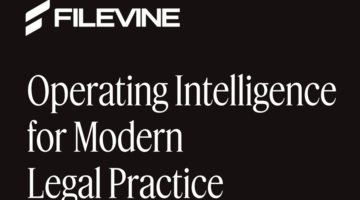As Brian Tannebaum wrote earlier today, many lawyers (and their cases) live and die by the ticking of the clock. Any attorney — or anyone who’s ever talked with an attorney — has heard about late nights struggling to file a brief by deadline.
So what happens when a litigant files a motion for appeal at 3 a.m. instead of the 12 a.m. deadline, and the judge allows the late filing anyway, then dismisses it on the merits… leading to yet another appeal?
In our Benchslap of the Day, Judge Frank Easterbrook writes, “it does not take a reference to Cinderella to show that midnight marks the end of one day and the start of another.” But maybe the plaintiff in the case does need to remember that he turns into a pumpkin at midnight, not 3 a.m….

Why Your Practice Is Burning Money And How You Can Do Better
Our expert panel explores common sources of profit leakage along with practical steps for improvement.
In John C. Justice v. Town of Cicero, Illinois (U.S. Court of Appeals for the Seventh Circuit via How Appealing), the plaintiff sued Cicero after the town seized six unregistered guns from his business. By the time the case reached the Seventh Circuit, he had already sued and lost twice at the district level.
Easterbrook’s ruling follows Justice’s most recent appeal, which he filed three hours after the 28-day deadline elapsed. The district judge accepted the 3 a.m. electronic filing by granting a nunc pro tunc order without any explanation. He then denied the motion on the merits, saying it was a rehash of arguments already made and rejected. Justice appealed again to the Seventh Circuit, and Easterbrook took a step back in his analysis, saying the nunc pro tunc order should not have been have been given in the first place. From last week’s ruling (citations omitted):
The judge changed the records to show that the motion had been filed a day before its arrival. That is an improper use of the nunc pro tunc procedure — a point this court has made repeatedly. (Nunc pro tunc “is not a substitute for relation back. It can’t be used to revise history, but only to correct inaccurate records.”). A judge who lacks the authority to grant an extension of time, see Rule 6(b)(2), can’t achieve the same end by calling the extension a “nunc pro tunc order” and backdating a document.

How Filevine Helps In-House Legal Teams Manage Every Matter With Confidence
AI powers tools for data intake, document management, and drafting contracts.
Ouch. CHECK YOU BACKDATING. In case anyone needed a reminder, Easterbrook reiterates that computer problems on the part of the litigants are no excuse for blowing deadlines. Only problems on the court’s end could be valid for an extension (citations omitted):
Just as a document deposited physically in a clerk’s office is filed on that date even if mishandled by the clerk, so a document transmitted electronically to the court is filed on the date of transmission no matter what the e-filing system does in response. But Justice did not transmit his Rule 59 motion on November 22, only to have the court’s software balk; he transmitted it on November 23 and must live with the consequences.
Courts used to say that a single day’s delay can cost a litigant valuable rights. With e-filing, one hour’s or even a minute’s delay can cost a litigant valuable rights. A prudent litigant or lawyer must allow time for difficulties on the filer’s end. A crash of the lawyer’s computer, or a power outage at 11:50 PM, does not extend the deadline, even though unavailability of the court’s computer can do so under Rule 6(a)(3).
With great technology comes great responsibility, or at least an increased necessity for punctuality. Sorry Mr. Justice, but it looks like you have run out of luck, or at least time.
John C. Justice v. Town of Cicero, Illinois [Seventh Circuit]